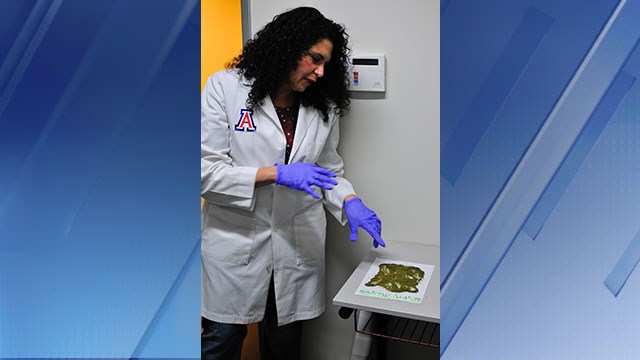You are here
Home 🌿 Medical Cannabis News 🌿 Arizona marijuana researcher raises questions about Uncle Sam's stash 🌿Arizona marijuana researcher raises questions about Uncle Sam's stash

Even if you’ve never used it, medical marijuana has a pretty distinctive look and aroma. The exception, according to a Valley researcher, is the marijuana that’s federally authorized for medical trials.
Dr. Sue Sisley is conducting the first-ever federally approved study on the effects of cannabis on veterans suffering from PTSD. The Scottsdale physician spent six years fighting for approval and finally got a shipment of clinical-grade marijuana for testing last year.
But when she opened the packaging, she wasn't too happy.
“I, of course, was disappointed,” she said.
Not only did the cannabis not look and smell like marijuana available at dispensaries, it was significantly less potent. Sisley had asked the federal government for a supply of marijuana with a THC content of 12 percent.
“This is a phenotype that’s readily available in every retail store in Arizona or Colorado. It’s a common phenotype,” she said.
What she got was ground-up cannabis with visible stems – an unnecessary part of the plant that’s usually discarded – and a THC content between 7 and 8 percent.
“Despite giving them almost two years, they weren't able to grow cannabis to spec in the way we’ve asked them. So ultimately just we gave up asking and took whatever they had available,” she said.
Speaking Tuesday via FaceTime from a conference out of state, Sisley said the problem is that all of the marijuana that is federally-approved for clinical research comes from a single farm at the University of Mississippi. With a contract from the National Institute on Drug Abuse, the university has been the sole legal distributor of cannabis for scientific purposes since 1968.
“Monopolies are a problem when it comes to science because monopolies cause entities to become lazy,” Sisley said.
The federal farm has relatively few varieties – approximately 185 according to a letter from the U.S. Department of Health and Human Services and Drug Enforcement Agency – and doesn’t do testing that many states consider standard. For example, the farm does not test for mold in its samples, Sisley said.
The marijuana available for testing also tops out at a potency of 13 percent THC, even though dispensaries widely offer marijuana between 20 and 30 percent.
“In an ideal world, scientists would have access to real-world cannabis -- what patients are actually using day-to-day,” she said. “It's tough to mimic the real world when you're forced to use study drug from only one place.”
Now that she’s seen the clinical crop up close, she worries about the impact on previous marijuana studies.
“A lot of the efficacy trials may show minimal effectiveness but not as robust as what patients are describing, and we wonder if that's partly because some of these studies are being sabotaged from the beginning by a study drug that isn't optimal,” she said. “It's time to end the monopoly and allow cannabis research to finally flourish in this country.”
Although far from ideal, Dr. Sisley said the marijuana is usable for the study and is actively recruiting veterans to participate.
If you'd like to participate in the study and are interested in seeing if you qualify, contact the Scottsdale Research Institute at Arizona@marijuanasites.org.
420 Intel is Your Source for Marijuana News
420 Intel Canada is your leading news source for the Canadian cannabis industry. Get the latest updates on Canadian cannabis stocks and developments on how Canada continues to be a major player in the worldwide recreational and medical cannabis industry.
420 Intel Canada is the Canadian Industry news outlet that will keep you updated on how these Canadian developments in recreational and medical marijuana will impact the country and the world. Our commitment is to bring you the most important cannabis news stories from across Canada every day of the week.
Marijuana industry news is a constant endeavor with new developments each day. For marijuana news across the True North, 420 Intel Canada promises to bring you quality, Canadian, cannabis industry news.
You can get 420 Intel news delivered directly to your inbox by signing up for our daily marijuana news, ensuring you’re always kept up to date on the ever-changing cannabis industry. To stay even better informed about marijuana legalization news follow us on Twitter, Facebook and LinkedIn.




